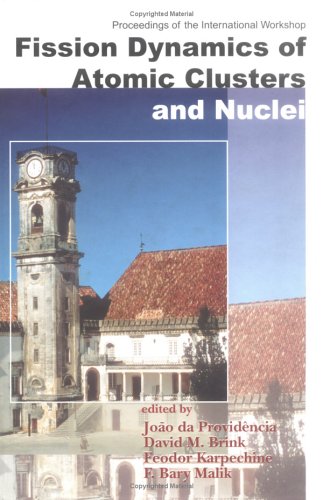

Most ebook files are in PDF format, so you can easily read them using various software such as Foxit Reader or directly on the Google Chrome browser.
Some ebook files are released by publishers in other formats such as .awz, .mobi, .epub, .fb2, etc. You may need to install specific software to read these formats on mobile/PC, such as Calibre.
Please read the tutorial at this link: https://ebookbell.com/faq
We offer FREE conversion to the popular formats you request; however, this may take some time. Therefore, right after payment, please email us, and we will try to provide the service as quickly as possible.
For some exceptional file formats or broken links (if any), please refrain from opening any disputes. Instead, email us first, and we will try to assist within a maximum of 6 hours.
EbookBell Team

4.8
64 reviews
ISBN 10: 9810246951
ISBN 13: 9789810246952
Author: Brink David M
In this volume, the main results of the last sixty years of research in nuclear fission are summarized, showing how ideas advanced from the beginning, for nuclei have also found useful applications in the new area of atomic clusters. The present status of the physics of fission is discussed in depth, and perspectives for further research are outlined.
Semiclassical Calculation of Shell Effects in Deformed Nuclei
Coupling of the Collective Pairing Vibrations with the Fission Mode
Fission Studies with Large Detector Arrays
Adiabatic and Non-Adiabatic Dynamics of Ions in the Formation of Electron Excitation Widths in Metal
Fission Decay of Nuclei and the Extension of the Periodic System
Fission in (the Light of) a Quark-Gluon Liquid Theory of the Nucleons
Statistical Modeling of Nuclear Systematics
Toroidal Structures in Light Nuclei
Neutron Halo of Fissile Nuclei
Search for Possible Isomer 232Pa
Broken Symmetry in Nuclear Matter
The Diverse Manifestations of Fission of Classical and Quantal Droplets
Energy-Density Functional Approach to Fission and Half-Lives of Superheavy Elements
Decay Channels of Hot Nuclei and Hot Metallic Clusters
Cluster Radioactivity
Static and Dynamical Properties of Simple Metal Clusters: Analogies with Atomic Nuclei
The Role of Exotica in Studying Nuclear Fission
Particle-Accompanied Fission
Alpha-Particle Structure on the Surface of the Atomic Nucleus
Superasymmetric Fission
Quaternary Fission
Bremsstrahlung Emission in Alpha-Decay
A Model for Particle Induced Fission
On the Half-Lives of Trinuclear Molecules
Fusion-Fission Reactions of Heaviest Nuclei: Synthesis of Superheavy Elements with Z = 114 and 116
Puzzling Results on Nuclear Shells from the Properties of Fission Channels
Emission of Light Charged Particles from Fission Fragments of Uranium Nuclei Induced by Slow Negative Particles
Possible Explanation of the Difference in Nuclear Fission Induced by Intermediate Energy Protons
Scission Configurations in Cold Fission
uranium fission discovery
nuclear fission and uranium
uranium fission diagram
unit nuclear chemistry fission fusion and applications
fission and fusion t chart
Tags: Brink David M, Fission, Atomic